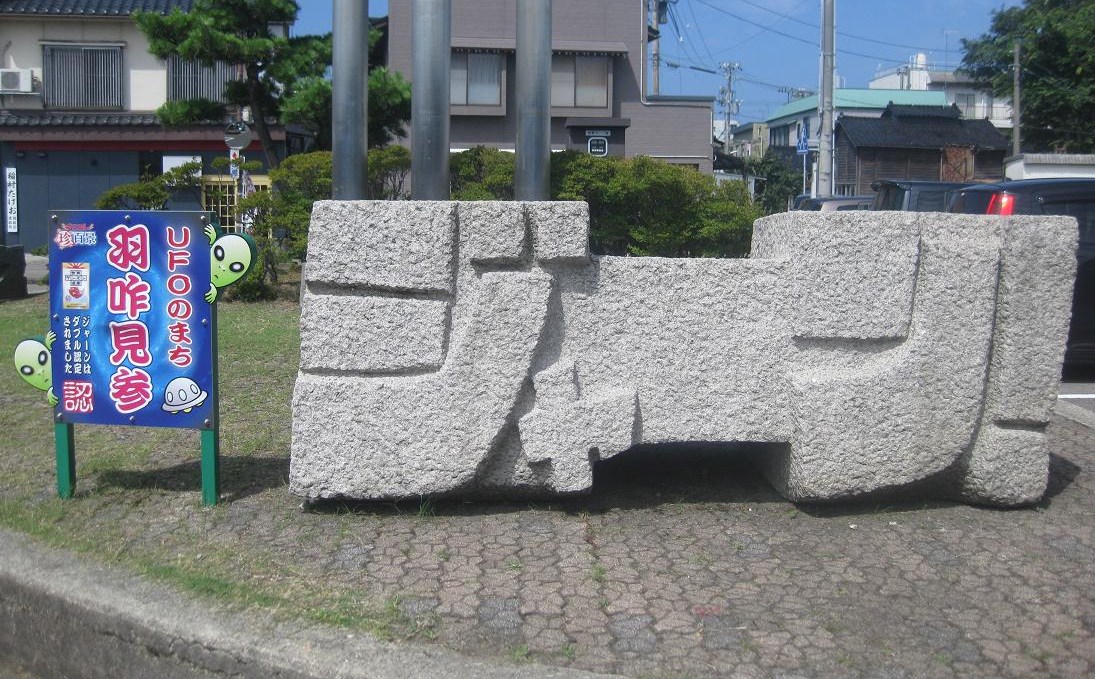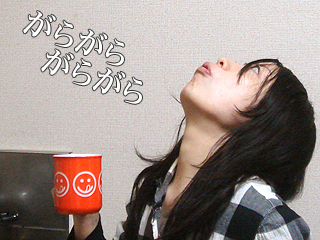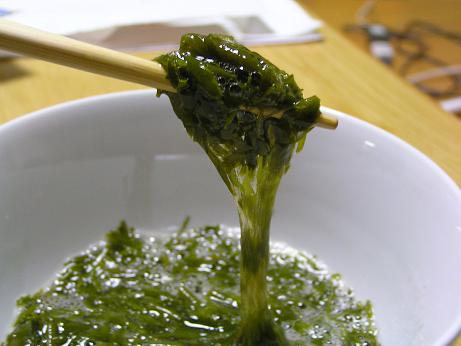
It rarely appears in beginner or intermediate textbooks, but spend a day with any native Japanese speaker and you’ll soon realise that onomatopoeia is a vital part of the language. Utterances such as, “The rain fell like ‘pssshaaaa'” and, “My heart was going ‘boom boom boom’ the whole time!” may come across as a little ineloquent when said in English, but in Japanese these kinds of mimetic words are not only considered perfectly acceptable, but pop up absolutely everywhere.
So if you’ve ever wondered what sound a Japanese pig makes, how best to describe a rolling boulder as opposed to a tiny marble, or would be perplexed if a doctor asked whether the pain you’re feeling is more shikushiku than kirikiri, now’s your chance to hone your language skills and add a few new words to your Japanese vocabulary!
There are in fact three distinct types of onomatopoeia in the Japanese language: 擬声語 giseigo, 擬音語 giongo and 擬態語 gitaigo. Let’s take a look at each and try out a few examples, starting with the simplest and most familiar.
- 擬声語 Giseigo
“Gao~!”
The simplest of the lot, these are words that mimic voices and sounds made by living things. Made up of the kanji characters 擬 gi (mimic) 声 sei (voice) and 語 go (word/language), the term giseigo literally means “voice mimicking word”, and are something that we encounter even before we can put whole sentences together, regardless of our native tongue.
In the same way that in English we teach our children that cats go “meow” and dogs go “woof”, Japanese too has a full animal phrase book. Tell a native Japanese speaker that in English a pig says “oink”, however, and they’ll probably look at you like you’ve just lost your mind, since Japanese giseigo really are much closer to the actual sounds animals make, regardless of whether the speaker does their best farmyard impression. Check these out:
buubuu: a pink grunting.
gao: a large animal or monster’s roar.
gerogero: a frog croaking.
ki~ki~: monkeys chattering.
kokekokko~: “cock-a-doodle-doo”, or the sound made by cockerels and roosters. Japanese are always especially astounded when they hear the English version of this one.
mehmeh: a sheep or goat bleating.
mo~mo~: a cow lowing (remember, it’s not “moo” as in “boo” but “mo” as in lawn “mower”, which when you think about it is kind of what cows do).
nyan: as if we needed reminding, this is a (nyan) cat meowing.
wanwan: a dog barking
- 擬音語 Giongo
“Gargle gargle”
Most frequently found in manga, giongo – written with the kanji for mimic 擬, sound 音, and word 語 – are used to describe sounds that exist in the world around us. Rather than making their own mimetic words up, however, or being stumped when asked how to spell the word that describes, say, paper being ripped or a car braking hard, most native Japanese speakers will be able to immediately point you to the correct phrase. Here’s a very small sample of what’s on offer.
katakata/gatagata: the sound of rattling, the latter being a “heavier” sound.
gatangoton, gatangoton: the rhythmic sound of a train clattering along its tracks.
garagara: the sound of rattling, often used to describe a person gargling.
mesomeso: uncontrollable weeping.
pakupaku: the sound of someone eating or happily chomping on something.
pa~n/ba~n: said with feeling, this mimics the sound of a firm slap or a (small) explosion such as a balloon popping, the latter for deeper pitch.
patapata: the sound of raindrops falling softly onto a surface, wings flapping, or light, quick footsteps.
pekopeko: an empty stomach grumbling.
poki/boki: the sound of thin object, such as a twig or waribashi chopsticks, being broken. The latter is used for larger, thicker objects.
shikushiku: to cry audibly though not as hard as mesomeso.
tekuteku: footsteps as a person trudges along, usually depressed or crestfallen.
waiwai: many people being loud.
warawara: the sound of a place bustling with activity and movement.
za~za~: the sound of heavy rainfall
- 擬態語 Gitaigo
“This dish is the most nebaneba I’ve ever seen…”
This is where things get really interesting, especially for those whose native languages do not employ such words. Like the two categories that come before it, gitaito 擬態語 features the kanji characters for “mimic” and “sound”, but sandwiched in the middle you’ll find “態”, meaning attitude, condition or appearance. Not technically onomatopoeia, gitaigo are mimetic words that describe actions or states and can be applied to almost anything. There is some cross-over with giongo, but on the whole these words do not exist as “sounds” per-se, and used in the right context their meaning will be obvious to a native speaker.
batabata: to be extremely busy and rushing around, sometimes (but not always) making a lot of noise in the process
boroboro: the word used to describe your clothes, bag, books etc being worn out and shabby.
burabura: to stroll or wander around (usually positive and suggesting a carefree attitude).
buyobuyo: used to describe something being fat or flabby.
furafura: to be dizzy or unsteady on one’s feet.
garagara: to be empty or unoccupied. This is often used to describe things like rooms, train carriages etc.
gassha~n: the sound of something fragile, such as glass, exploding, frequently used in manga.
geragera: loud laughter. Imagine the powerful, bearded character Mamma Aiuto from Ghibli’s Porco Rosso bursting into laughter and you’ll be on the right track.
iraira: to be irritable or on angry, typically in adults.
ja~n!/jaja~n!: the Japanese version of “tadaa”, used when something (usually impressive or pleasant) appears or is suddenly revealed.
jirojiro: to stare, often conveying hostility or suggesting a lack of manners in the person doing it.
ka~n ka~n/go~n go~n: a church or temple bell ringing, the latter being a lower pitch.
kirakira: something sparkling; diamonds, the sunlight on the surface of a lake, the eyes of the girl or boy you’re trying to woo…
kirikiri: a sharp pain.
kusukusu: the sound of giggling or quiet laughter.
kasakasa/gasagasa: crisp, dry objects, such as paper rubbing together, the latter used for larger objects.
korokoro/gorogoro: round, rolling objects, usually large and heavy when the latter is used.
kurukuru: an object whirling or revolving at speed.
morimori: word used to describe something or someone swelling up, usually with pride or energy.
nebaneba: sticky and stringy substances. The perfect word to describe foods like natto.
nikoniko: you may know it from the video service of the same name, but this word describes smiling happily.
niyaniya: not to be confused with “nya“, this describes a person grinning.
nyoronyoro: a long, thin object or creature squirming or moving.
perapera: a word used most often to describe fluency in speech. It can also be used to describe the action of flipping pages in a book.
pikapika: shiny and new, not just one of our pal Pikachu‘s few phrases of speech.
punpun: to be angry or sulky. Often used to imply an element of cuteness at the same time.
pyonpyon: hopping or skipping with spritely energy.
shinshin: not to be confused with “chinchin” (which means penis), this word is predominantly used to describe soft snow falling silently and at speed, and is one of this writer’s absolute favourites.
ukiuki: to be in high spirits.
shikushiku: a constant dull pain when used with the word “itai”, meaning pain.
uruuru: describes the action of wandering around aimlessly (usually a negative connotation), otherwise describing someone’s teary-eyed expression.
wakuwaku: to be excited or nervous in anticipation.
zukizuki: a throbbing pain. A very useful word when going to the clinic!
There are, of course, hundreds of other onomatopoeic words out there for you to discover and learn, so keep your eyes and ears open and see what you can find. It may take a while to learn how to use each of these terms, but with this short list as a reference and a little practice, you’re bound to be told how “perapera” you are in no time! Be sure to let us know your own favourite Japanese onomatopoeic words in the comments section below!
Top image: Wikimedia Commons
Additional images: nifty, shinribukuro rakuten




 Test your Japanese onomatopoeia skills against YouTuber Sharla in Japan
Test your Japanese onomatopoeia skills against YouTuber Sharla in Japan Onomatotastic! Sony’s Portable Games Console Gets a Cool New Ad 【Video】
Onomatotastic! Sony’s Portable Games Console Gets a Cool New Ad 【Video】 What’s the fastest-sounding Japanese word? (Hint: it’s the noise a bullet train makes)
What’s the fastest-sounding Japanese word? (Hint: it’s the noise a bullet train makes) Japan now has so many 30-year-old virgins its language needs a new slang term for them
Japan now has so many 30-year-old virgins its language needs a new slang term for them Best instruction manual ever? What to do when your washer goes “kiiin”, “shaaa”, or “pokopoko”
Best instruction manual ever? What to do when your washer goes “kiiin”, “shaaa”, or “pokopoko” More Than a Capsule Stay: Why Solo Travelers Choose “global cabin Yokohama Chinatown”
More Than a Capsule Stay: Why Solo Travelers Choose “global cabin Yokohama Chinatown” Nagoya’s dark-red miso has continued to capture tastebuds for generations
Nagoya’s dark-red miso has continued to capture tastebuds for generations Japan’s oldest largetooth sawfish in captivity back on display in Mie Prefecture
Japan’s oldest largetooth sawfish in captivity back on display in Mie Prefecture Hot wheels: We find a wood-burning stove inside a food truck in Nagano
Hot wheels: We find a wood-burning stove inside a food truck in Nagano Pizza Hut Japan’s hot lucky bags are perfect for a New Year’s pizza party
Pizza Hut Japan’s hot lucky bags are perfect for a New Year’s pizza party Kyoto’s “ikezu” culture of backhanded compliments explained in hilarious souvenir sticker series
Kyoto’s “ikezu” culture of backhanded compliments explained in hilarious souvenir sticker series The pros and cons of using Fluffy Foam Soy Sauce【Taste test】
The pros and cons of using Fluffy Foam Soy Sauce【Taste test】 How much difference does the choice of mold make in fermenting food?
How much difference does the choice of mold make in fermenting food? New Pokémon dress shirt line lets you dress like an adult in the company of all 151 Kanto species
New Pokémon dress shirt line lets you dress like an adult in the company of all 151 Kanto species Japan’s new luxury overnight bus is the conveniently classy way to get from Tokyo to Osaka
Japan’s new luxury overnight bus is the conveniently classy way to get from Tokyo to Osaka Starbucks Japan ready to get Year of the Horse started with adorable drinkware and plushies【Pics】
Starbucks Japan ready to get Year of the Horse started with adorable drinkware and plushies【Pics】 7-Eleven Japan’s ramen-cooking robot whipped us up a bowl of noodles【Taste test】
7-Eleven Japan’s ramen-cooking robot whipped us up a bowl of noodles【Taste test】 Cyberpunk anime meets traditional culture in Ghost in the Shell gold leaf Japanese changing screens
Cyberpunk anime meets traditional culture in Ghost in the Shell gold leaf Japanese changing screens 7 great places to see Mt. Fuji from without having to climb it
7 great places to see Mt. Fuji from without having to climb it Hello Kitty Choco Egg figures are an adorable trip through three periods of Japanese pop culture【Pics】
Hello Kitty Choco Egg figures are an adorable trip through three periods of Japanese pop culture【Pics】 Japan’s otoshidama tradition of giving kids money at New Year’s gets a social welfare upgrade
Japan’s otoshidama tradition of giving kids money at New Year’s gets a social welfare upgrade We found possibly the quietest Japanese-style hotel in Tokyo’s bustling Shinjuku district
We found possibly the quietest Japanese-style hotel in Tokyo’s bustling Shinjuku district Lacquerware supplier to emperor of Japan and Pokémon team up for new tableware
Lacquerware supplier to emperor of Japan and Pokémon team up for new tableware Sumo Sanrio! Hello Kitty and pals team up with Japan Sumo Association for new merch【Pics】
Sumo Sanrio! Hello Kitty and pals team up with Japan Sumo Association for new merch【Pics】 Can a dirty butthole make you filthy rich in Japan? We’re starting a New Year’s lottery experiment
Can a dirty butthole make you filthy rich in Japan? We’re starting a New Year’s lottery experiment 7-Eleven Japan starts new temporary luggage storage service in over 300 branches
7-Eleven Japan starts new temporary luggage storage service in over 300 branches Disillusionment at Tsukiji’s tourist-target prices led us to a great ramen restaurant in Tokyo
Disillusionment at Tsukiji’s tourist-target prices led us to a great ramen restaurant in Tokyo Starbucks teams up with 166-year-old Kyoto doll maker for Year of the Horse decorations【Photos】
Starbucks teams up with 166-year-old Kyoto doll maker for Year of the Horse decorations【Photos】 Tokyo considering law requiring more trash cans following litter increase in heavily touristed area
Tokyo considering law requiring more trash cans following litter increase in heavily touristed area Tokyo’s Tsukiji sushi neighborhood asks tour groups to stay away for the rest of the month
Tokyo’s Tsukiji sushi neighborhood asks tour groups to stay away for the rest of the month Nintendo’s Kirby now delivering orders at Kura Sushi restaurants, but not in Japan
Nintendo’s Kirby now delivering orders at Kura Sushi restaurants, but not in Japan Tokyo event lets you travel back in time, for free, to celebrate 100 years since Showa era start
Tokyo event lets you travel back in time, for free, to celebrate 100 years since Showa era start Sanrio theme park in Japan announces plans to expand into a Sanrio resort
Sanrio theme park in Japan announces plans to expand into a Sanrio resort Japan may add Japanese language proficiency, lifestyle classes to permanent foreign resident requirements
Japan may add Japanese language proficiency, lifestyle classes to permanent foreign resident requirements Survey asks foreign tourists what bothered them in Japan, more than half gave same answer
Survey asks foreign tourists what bothered them in Japan, more than half gave same answer Japan’s human washing machines will go on sale to general public, demos to be held in Tokyo
Japan’s human washing machines will go on sale to general public, demos to be held in Tokyo Japan’s deadliest food claims more victims, but why do people keep eating it for New Year’s?
Japan’s deadliest food claims more victims, but why do people keep eating it for New Year’s? We deeply regret going into this tunnel on our walk in the mountains of Japan
We deeply regret going into this tunnel on our walk in the mountains of Japan Studio Ghibli releases Kodama forest spirits from Princess Mononoke to light up your home
Studio Ghibli releases Kodama forest spirits from Princess Mononoke to light up your home Major Japanese hotel chain says reservations via overseas booking sites may not be valid
Major Japanese hotel chain says reservations via overseas booking sites may not be valid Put sesame oil in your coffee? Japanese maker says it’s the best way to start your day【Taste test】
Put sesame oil in your coffee? Japanese maker says it’s the best way to start your day【Taste test】 No more using real katana for tourism activities, Japan’s National Police Agency says
No more using real katana for tourism activities, Japan’s National Police Agency says Starbucks Japan reveals new sakura drinkware collection, inspired by evening cherry blossoms
Starbucks Japan reveals new sakura drinkware collection, inspired by evening cherry blossoms Updated cherry blossom forecast shows extra-long sakura season for Japan this year
Updated cherry blossom forecast shows extra-long sakura season for Japan this year Language fail: 22 funny and embarrassing tales of Japanese language missteps
Language fail: 22 funny and embarrassing tales of Japanese language missteps Cat got your tongue? 10 unusual Japanese phrases that use the word ‘cat’
Cat got your tongue? 10 unusual Japanese phrases that use the word ‘cat’ BuzzFeed’s video of “anime expressions” delivers more laughs than useful language pointers
BuzzFeed’s video of “anime expressions” delivers more laughs than useful language pointers 10 badass four-character phrases to add to your Japanese language toolkit
10 badass four-character phrases to add to your Japanese language toolkit Does the Japanese word “natsukashii” exist in other languages? Japanese Twitter investigates
Does the Japanese word “natsukashii” exist in other languages? Japanese Twitter investigates Japanese, Korean, and Chinese speakers pronounce English words in their native languages 【Video】
Japanese, Korean, and Chinese speakers pronounce English words in their native languages 【Video】 Researchers use uniformity of Japanese language to read people’s minds
Researchers use uniformity of Japanese language to read people’s minds Learners beware! Even Japanese people agree that their language can be really ambiguous
Learners beware! Even Japanese people agree that their language can be really ambiguous Is Japanese language becoming less discriminatory towards women?【Women in Japan Series】
Is Japanese language becoming less discriminatory towards women?【Women in Japan Series】 Why does Japanese writing need three different sets of characters? (Part 1)
Why does Japanese writing need three different sets of characters? (Part 1) Japanese students despair over the many, MANY ways you can describe a dead flower
Japanese students despair over the many, MANY ways you can describe a dead flower World’s first moaning hiragana character either a stroke of genius or just plain weird【Video】
World’s first moaning hiragana character either a stroke of genius or just plain weird【Video】 Five Japanese sign language phrases with interesting reasoning behind them
Five Japanese sign language phrases with interesting reasoning behind them
Leave a Reply